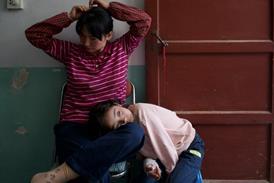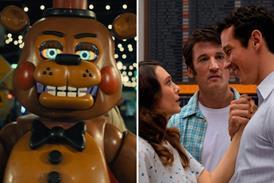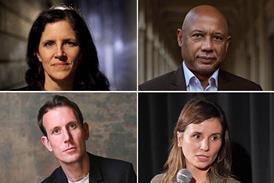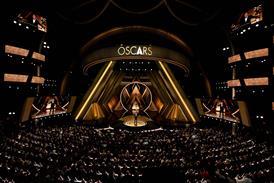The director of Elizabeth: The Golden Age talks about producing documentary, Bollywood, The Greatest Love Story Ever Told, which is screening in official selection at Cannes.
Kapur, who sat on the Cannes competition jury last year, has produced a feature-length documentary for the festival which takes an entertaining and nostalgic look at India’s mainstream cinema through the decades.
The film, which is directed by Rakeysh Omprakash Mehra (Rang De Basanti) and Jeff Zimbalist (The Two Escobars), aims to help Western audiences see India’s “song-and-dance” cinema in the context of the culture that created it, and understand why it’s so important to Indians, both in India and overseas.
Bollywood, The Greatest Love Story Ever Told will have a red carpet screening at the Lumiere in the Palais des Festivals on May 14. India’s UTV Motion Pictures produced the film and is handling international sales. UTV’s Ronnie and Trishya Screwvala are producing alongside Kapur.
How did the film come about?
I was on the Cannes jury last year and talking to Thierry [Fremaux] about Bollywood film. The idea that came out of the conversation was to make a film that gives you the experience of what Bollywood means for an audience who knows nothing about it. It’s not an analysis of Bollywood but about the experience – about India’s addiction to song-and-dance. It’s a love story between a cinema and the two billion people who are passionate about it and keep loving it.
Is there any analysis in there? Have you also used interviews?
Well you can’t really do a 90-minute film with just back-to-back song-and-dance sequences, so the audience will also get the idea that Bollywood is not totally unrelated to the growth of India. There is a sense of history stretching back 60-70 years from the time of independence, then the loss of faith, through to Bhopal and the modern day. You can sense how the moods and fashions change and how a new generation is taking over.
We haven’t relied on too many interviews because we wanted to steer away from analysis. The idea is to make people catch the beat of Bollywood themselves. Some of the most interesting interviews are with people on the street talking about why they love it.
How did you select the footage from such a vast cinematic output?
Like the best producers, I sat back and made sure everyone had a vision! I brought in two directors – Rakeysh Omprakash Mehra, who is steeped in Bollywood and has the knowledge, and Jeff Zimbalist who came with no knowledge. I wanted him on board because he’s an incredible documentary filmmaker and because someone who knows everything has no sense of discovery. It was a pretty adventurous thing to do but then that is the idea of cinema. That’s also why we tied up with UTV as they have access to – or can request the rights to – so much material. It was really a huge job.
How did the two directors work together?
It was total collaboration. Apart from being co-director, Jeff was also the editor as documentary filmmakers mostly edit their own stuff, while feature filmmakers usually don’t. So he would stay in the editing room, and Rakeysh would keep coming back from time to time to discuss everything with him.
Did Cannes commission the film?
They didn’t pay for it but the idea originated at Cannes. They said let’s see it and, if we like it, we’ll find a slot for it. So it was still quite a risk because at the end of it all, it might have amounted to nothing. It’s a bit like – how to do you tell the story of Europe? But it was a fascinating thing to do.
How much is the film about Bollywood’s stars?
It’s not focused on the stars but of course you see them. And when you see someone like Shammi Kapoor you can sense that it’s the 1960s and that something is changing. Shammi Kapoor defined the ‘60s.
What will happen to the film after Cannes?
We’ll show it to other festivals and look at doing a commercial release if we can, but it doesn’t matter if not, because we made it for a certain budget and anyway the idea was to make it for Cannes. It was an interesting cinematic experience because of what Bollywood is. There’s a sense of joy that keeps seeping through the film, a sense of history, but also a sense of celebration. It’s the most celebratory form of cinema that there is in the world. So it’s a very festive film.
Who is your favourite contemporary Bollywood filmmaker?
In terms of song and dance, Mani Ratnam still stakes out a quality below which he never goes –a combination of quality, keen observation and aesthetics. We also have some new filmmakers who are rebelling against the Bollywood song-and-dance formula and making some interesting films. But they’re not quite at the level of sophistication as say Iranian cinema – at least not yet.
What are you working on next?
I’m juggling three projects – Paani [Kapur’s passion project about a not-so-distant future in which water is scarce], Mallory [biopic of George Mallory who disappeared on Mount Everest, for Julia Roberts’ Red Om Films] and The Three Lawrences [thriller for K5 International and Convergence Entertainment].
The Paani script is ready and going out to cast. It’s really creating a buzz because of the subject matter. It wasn’t an easy script to write – how do you make a film about the future of water and also make it an epic love story? But we’ve done some focus groups with actors reading from the script and the reaction we get is that the story is very emotional.






















No comments yet